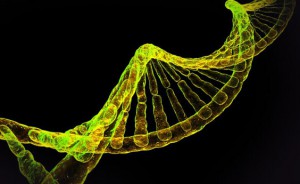It’s common to know that dissolving peptides is a very important part, because if the dissolution is not improper then peptide loss or incomplete experiment might happen. Actually, peptides’ dissolution mainly depends on the sequence of peptides. Therefore, if the experiment is well-prepared, peptide sequence should contain at least 20% of the charged residues, for the purpose of enhancing the solubility.
 1.Generally, peptides that contain less than five amino acids are soluble in aqueous solutions, but strong hydrophobic amino acids could be the exception.
1.Generally, peptides that contain less than five amino acids are soluble in aqueous solutions, but strong hydrophobic amino acids could be the exception.
2.If the charged amno acids are in the average distribution of entire sequence, then those hydrophilic peptides that contain >25% of charged amino acids (E, D, K, R, H) and some peptides that contain <25% of hydrophobic amino acids can both be dissolved in an aqueous solution. Specifically, the purification system of polypeptides is generally regular, compared with other kinds of peptides. In addition, if the peptides were dissolved in the buffer with weak or no buffering capacity, such experiment could result in acidic peptide solution. Based on the fact, you should try to make sure that the pH value of solvent is nearly neutral while using other methods to dissolve peptides.
3.It is much better for you to dissolve peptides into the smallest amount of strong solvents like DMF and ACN. On the other hand, in terms of those similar organic solvents, it’s better to dissolve the peptides by slowly adding the aqueous solution. Furthermore, if the solution becomes cloudy, it might because it has reached the solubility limit, which means the continuous dissolution is sort of useless. It should be noted that the chosen solvent should be compatible with the experiment system when you begin the experiment.
4. The hydrophobic amino acids that contain > 75% of highly hydrophobic peptides are generally not soluble in aqueous solutions. Thus, such peptides should first use strong solvent like TFA to conduct dissolution process. The final peptide solution may require a high concentration of organic solvent to realize denaturation, but organic solvents are generally not used for biological function research of living cells.
5. Some polypeptide sequences can easily form intramolecular hydrogen bonds among the redundant networks, and are also easy to form gel in the aqueous solution. Such peptides can be dissolved by following the third step.
What’s the most important is that peptide experiment should be payed more attention. To reduce the possible problems during the dissolution, it’s recommended that more considerations should be based on the design and sequence, in order to improve the solubility of peptides.